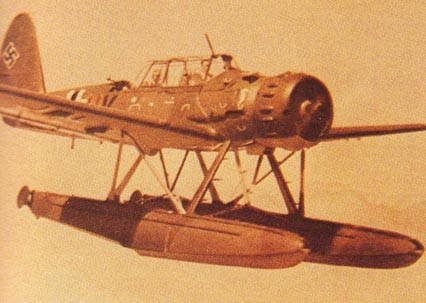The awkward-looking Arado Ar 196 was designed to be a worthy successor of the famous Heinkel He 50, a catapult launched biplane carried by most of Nazi Germany capital war ships in the early to mid 1930s. The twin-float 196 first took to the air in the early summer of 1938. The aircraft handled characteristics topped that of its predecessor in an aerial masterpiece that when on to influence the Luftwaffe top brass’ decision to take a huge gamble ordering the 196 into full production mode before it’s trial series was fully completed.
The Ar 196 entered frontline service just before hostiles broke out in Continental Europe. In all, 536 units of this unusual aircraft were built before hostilities ceased in May 1945. The most prolific of the four versions 196 was the Ar 196A-3. It was a single 196A-3 model that became famous when in the morning of May 5th, 1940 its pilot and co-pilot accepted the surrender of the HM submarine Seal and its crew complement.
The Ar 196 went on to have a long and distinguish service career serving as a long range reconnassaince patrol aircraft. Besides using mayor naval platform such as the Bismarck and Tirpitz, the Ar 196 was launched from German shore controlled bases in the Eastern Mediterranean and Central Adriatic Seas. As the Germany war effort began to be crippled by the massive Allied ground, sea and air juggernaut; more and more 196 were utilized as troop ferry platform. A role they serve until the final days of the war.
| Power Plant | One 970hp BMW 9 cylinder radial engine |
| Wingspan | 12.40m |
| Length | 11m |
| Height | 4.45m |
| Maximum takeoff weight | 3,730kg |
| Top Speed | 320km |
| Service Ceiling | 7,000m |
| Operational Range | 1,070km |
| Armament | Two 20mm fixed, wing mounted, forward firing cannons. One 7.92mm heavy machine gun in starboard side and another in the rear cockpit. Total bomb load was 100kg. |
